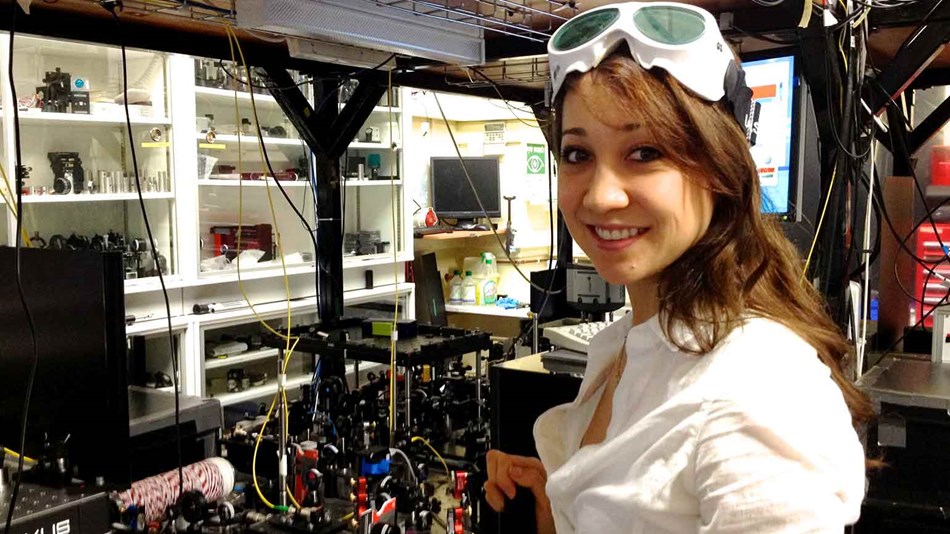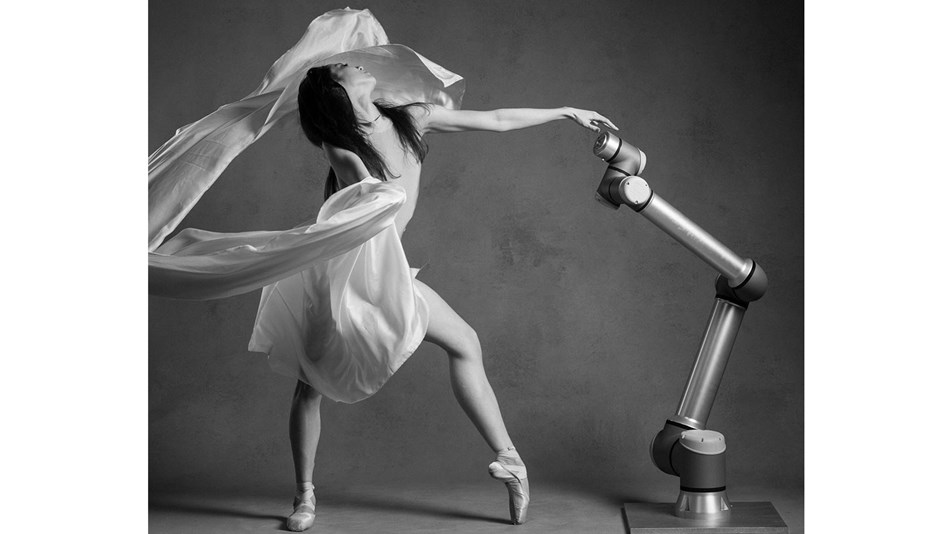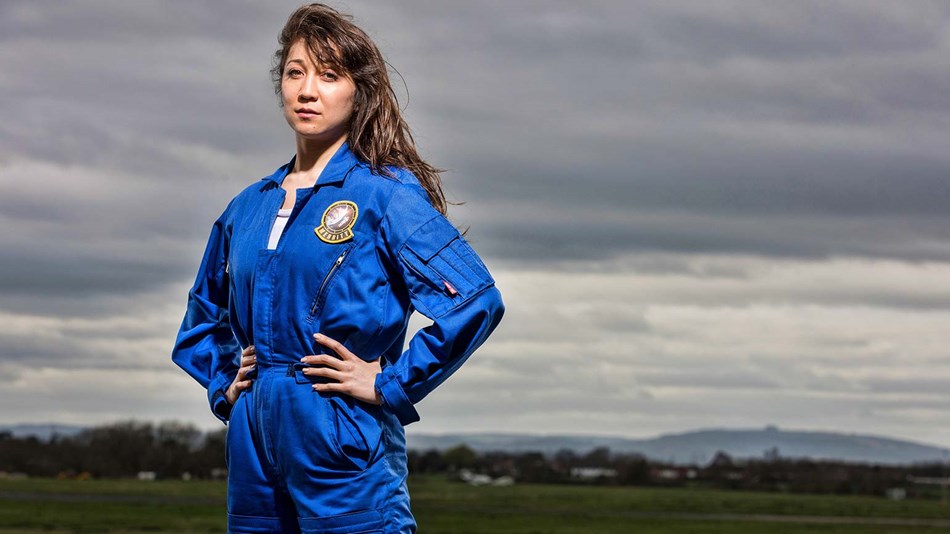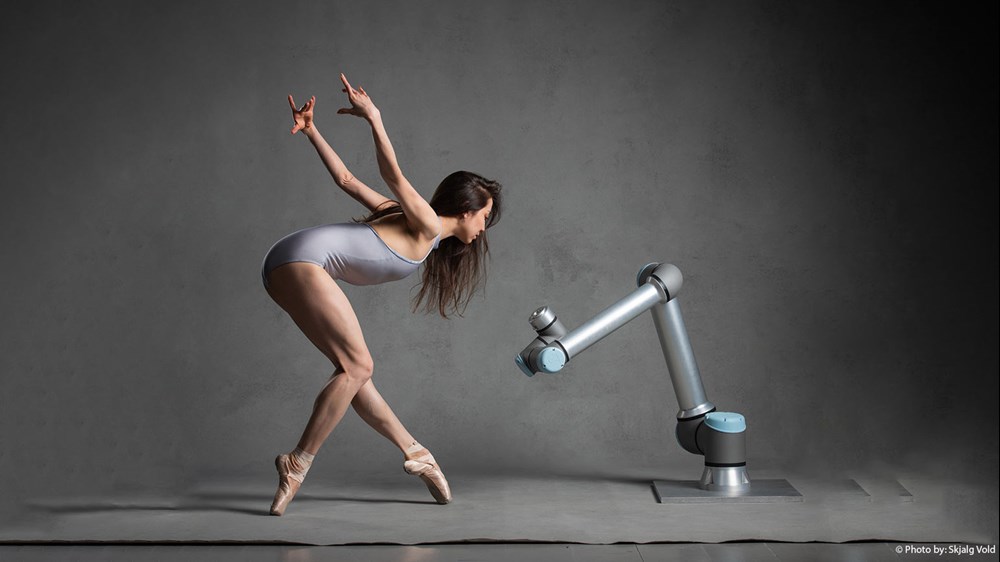At the beginning of the pandemic, Dr. Merritt Moore didn’t realize that her only dance partner for the foreseeable future would be a cobot. This didn’t stop her from turning the world of dance on its head and creating beautiful and unique performances with her new robot partner. “There are so many rigid stereotypes of what a dancer or a scientist should be, and this can be really damaging for both disciplines. For scientists and engineers, creativity is key in finding new solutions to problems. For dancers, the ability to be technical and analytical can take your practice to the next level”DR. MERRITT MOORE
Originally from Los Angeles and now living in London, to many it would seem that Merritt has a very unconventional background. She has carved out a career as a professional ballet dancer with the Norwegian National Ballet, English National Ballet and Boston Ballet. Yet she has also made waves as a quantum physicist, undergone astronaut training and earned a PhD in atomic and laser physics from the University of Oxford.
Whilst some people told her that she would have to make a choice between the two disciplines, for Merritt, blurring the lines between arts and science comes naturally. In her opinion her creative endeavours directly inform the fresh ideas she can bring to her work in STEM.
“There are so many rigid stereotypes of what a dancer or a scientist should be, and this can be really damaging for both disciplines. For scientists and engineers, creativity is key in finding new solutions to problems. For dancers, the ability to be technical and analytical can take your practice to the next level,” Merritt said, “I hope that the next generation of women will be inspired to defy expectations of how a career in STEM should look.”
https://video.universal-robots.com/v.ihtml/player.html?token=d3e5293de6d97d81b52a2dc30fc03f6a&source=embed&photo%5fid=65482555
Watch Dr. Merritt Moore in a stunning choreography with her pandemic dance partner “Baryshnibot” – aka. a UR10 cobot – inspired by legendary dancer and choreographer, Mikhail Baryshnikov.
A remarkable example of how Merritt Moore herself defied those expectations in more interdisciplinary ways than anyone could imagine, is her pas de deux with a UR10e cobot, named “Baryshnibot” by her Instagram followers.
The unusual partnership began in Oslo where Merritt was performing Swan Lake and La Bayadere with the Norwegian National Ballet. Through mutual friends she randomly met Silje Gabrielsen, senior designer and cofounder of Hiro Futures, a human-robot interaction start-up based in the Norwegian capital. “We research artificial social skills in robotics,” says Silje Gabrielsen. “One of our focus areas is how we foster better collaboration between humans and robots. Today’s robots are still lacking several skills to properly collaborate in non-industrial settings. Instead of simply using a screen or additional hardware to communicate and interact with humans, we want to use a more intuitive communication system; body language.” she explains. “I was hooked. On weekends, after rehearsals and in between shows, I would work with the robot exploring movement.”DR. MERRITT MOORE

When she heard that Moore was both a professional ballet dancer and an astrophysicist with a keen interest in robotics, she felt there was a perfect match. “We both thought this would be an amazing opportunity to explore these interactions and movements further,” says the Norwegian designer who first loaned Merritt Moore the agency’s own UR5e robot and then through a UR distributor helped her borrow the larger UR10e robot with more reach.
“I was hooked,” says Merritt. “On weekends, after rehearsals and in between shows, I would work with the robot exploring movement.” Her work caught the interest of the new ArtLab at Harvard University in Boston that invited her to be one of their first artists-in-residence to explore this research further.
“This was right before lockdown in Jan-Feb 2020. When the lockdown happened, I did think ‘hmm interesting that I was just working with robots. Who knew that a robot could be my only potential dance partner for a very long time?’ And here we are,” she says.

Whilst Baryshnibot was originally designed for repetitive industrial automation tasks, Merritt has worked hard to ensure that the collaborative robot (cobot) could keep up with her complex dance moves.
“I chose a cobot from Universal Robots as I needed a machine with the ability to react safely and intuitively to human movement. It’s also great that the robot is so easy to re-program, which has made it simple for me to teach it new dances and styles relatively quickly. The cobot usually performs tasks with simple, repetitive movements such as screwdriving and sanding, so I had to think of ways to get the movements to line up perfectly with human movements.”
Merritt has been working in a studio space provided by The Koppel Project. Next, she will be taking her performance to a central London gallery space and livestreaming the event for the public.

Merritt’s next step? Becoming an astronaut. She was one of 12 selected astronaut candidates to undergo rigorous selection process on the BBC Two show “Astronauts: Do you have what it takes?” under the guidance of Commander Chris Hadfield and continues to pursue that dream. “My dream of becoming an astronaut is one of the big reasons I work now with robots. I feel like it is an expertise that will be highly needed in the future of space exploration and that it will make my application to NASA even stronger,” she says.









